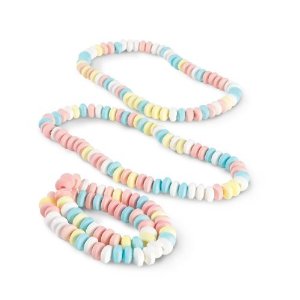Warheads
When I think about Warheads candy, I recall the days of elementary school throughout the 1990s and the sacred time after lunch: recess. My classmates and I would dare each other to put multiple Warheads in our mouths and see who could bear it the longest. Accepting the dare was customary and our faces would contort until they were relieved by the sweet flavor underneath the sour layer of the Warheads. Afterwards, we would be overcome by laughter and describe how it felt to have multiples of these candies in our mouths, as if they were actual war stories. Our parents never quite understood the appeal of these delightful and daring candies, but often conceded to buying them on occasion at the grocery store.
Warheads emerged in the U.S. in the early 1980s and are manufactured by Impact Confections. According to descriptions of ket from our class discussion, Warheads are a prime example of ket. The way Warheads are marketed is supposed to elicit the thought and feeling of a nuclear warhead going off in one’s head during consumption of the candy. This very real object (a nuclear warhead) is clearly not to be eaten; because the Warhead candy is eaten and enjoyed by children, it gains ket-like qualities. Warheads come in fruit flavors like apple, black cherry, and watermelon, but unlike fruits the candies have unnatural colors and textures. These candies are without nutrition and are extremely childish. Never have I met an adult who would even touch a Warhead without spitting it out. The sensational sour taste provides amusement for children while disgusting their parents. As my memory recounts, kids eating Warheads on the playground also provides the social aspects of this ket.
As far as I am concerned, Warheads “[belong] exclusively to the world of children” and are a fond memory of my childhood days (380).




